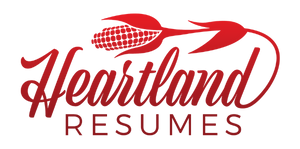Have you ever thought about what makes a person successful and why some achieve easier than others?
Over the years, we have seen numerous success tips to help and achieve the success we all crave. With all kinds of how-to’s out there, it’s hard to narrow down which ones actually work for you.
When we become clear on our definition of success, it paints a clearer picture of how we view our lives. With this insight, your goals become more direct, and our desire to achieve success increases.
Have a clear version of success
Obtaining clarity on this will change your mindset positively. This is a critical part of being and feeling successful.
We all have an understanding of what success means to us. However, we know this on an unconscious level, making it challenging to understand our truth. This is why it’s so important to communicate with ourselves to find those answers.
Sit in a quiet place and write it out. We found that journaling is a great way to speak your truth. Another way is through meditation.
When your mind feels still, ask yourself, “what does success mean to me?” and “what does success look and feel like?”
Define the end game
In order to achieve success, you need an end game. Once you set an outcome, the steps to achieve it become crystal clear.
Creating generic goals is one of the biggest mistakes we make when defining an end game. It can’t be something too basic or lacks passion, or you will give up before you even start. Goal setting should be exciting from the moment you write it to the moment you achieve it.
You can do this by closing your eyes and write down how you felt when you achieved that goal. If you saw anything or heard anything write that down as well. Date it for when you will achieve the goal.
Doing this will give you the satisfaction of visualizing your goals and maximizing the opportunity to achieve them.
Stay on track
Have you heard of the importance of alignment? If not, that’s ok. We can help explain.
Alignment is key to achieving success, and it’s about aligning your goals with what is important to you. Meaning your goals must run parallel with your values and your version of success.
Your personal values are powerful core motivators, and if you write goals out of alignment, you could find yourself getting in your own way.
For example, if you set a goal to grow your business, this means spending more time in your business than you usually would. But spending quality time with your family may be your top priority. So working on this goal would mean you will have less time with your family.
If you don’t align this by adjusting the goal, your energy will dilute from trying to do everything. Or you might miss your family and start resenting your business. In both cases, your low energy or resentment will cause you to miss the target altogether.
This is why alignment is crucial when goal setting. If your goal doesn’t align with your values and what’s important, you will misalign and forego the goal entirely.
Take time and truly focus on alignment every time you set a new goal. It’s worth the energy and time to achieve the life you want.
Attitude is everything
If you are someone who gives up quickly, you may find it more difficult to achieve the life you want. However, developing a ‘can-do attitude will give you the boost needed to get to the finish line.
True success takes time and requires a positive attitude. This is not as easy for some people, but there are ways to stay positive towards your goals.
Persistence is one way. Staying persistent through the ups and downs can help maintain a positive attitude. Not everything will go to plan, but not getting bogged down with the details and staying determined to do whatever it takes will always keep you moving forward.
Bottom line
There are so many ways to achieve the life you want, and using some of these ideas could help, but it’s up to you to be clear on your definition of success so you know what is really important to you.
Want to see more of our ideas? Please read our blog on 5 habits to be successful.











